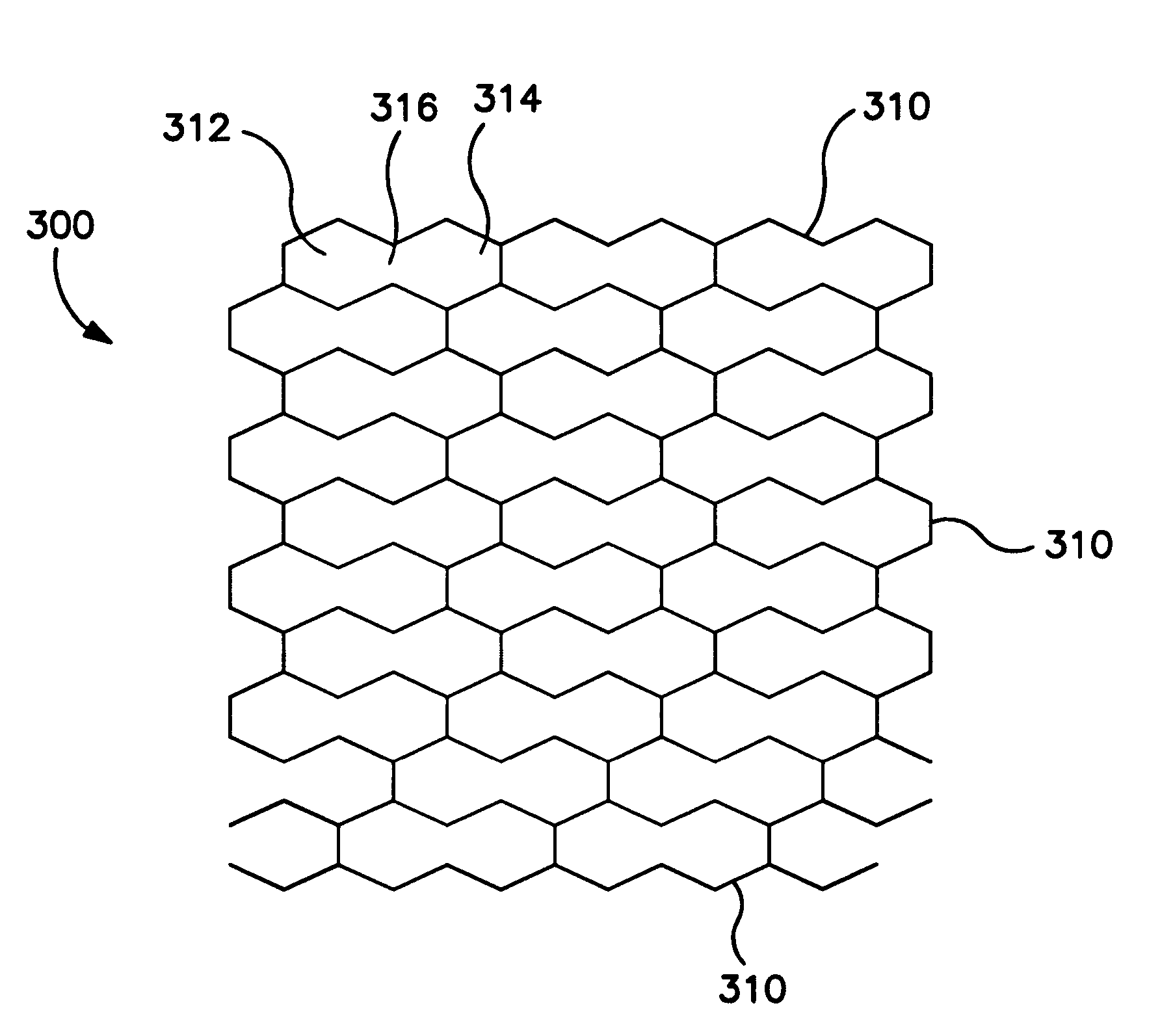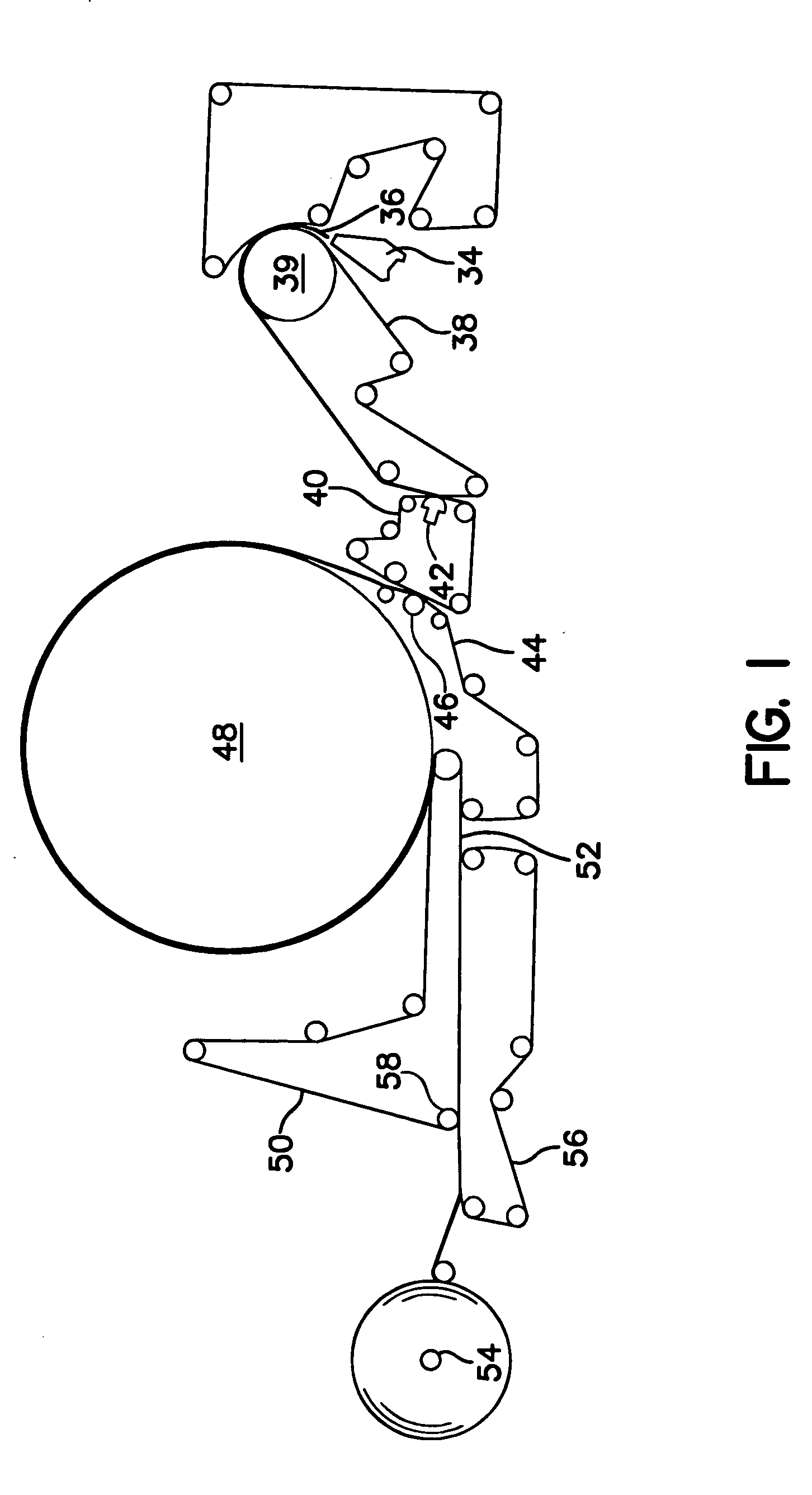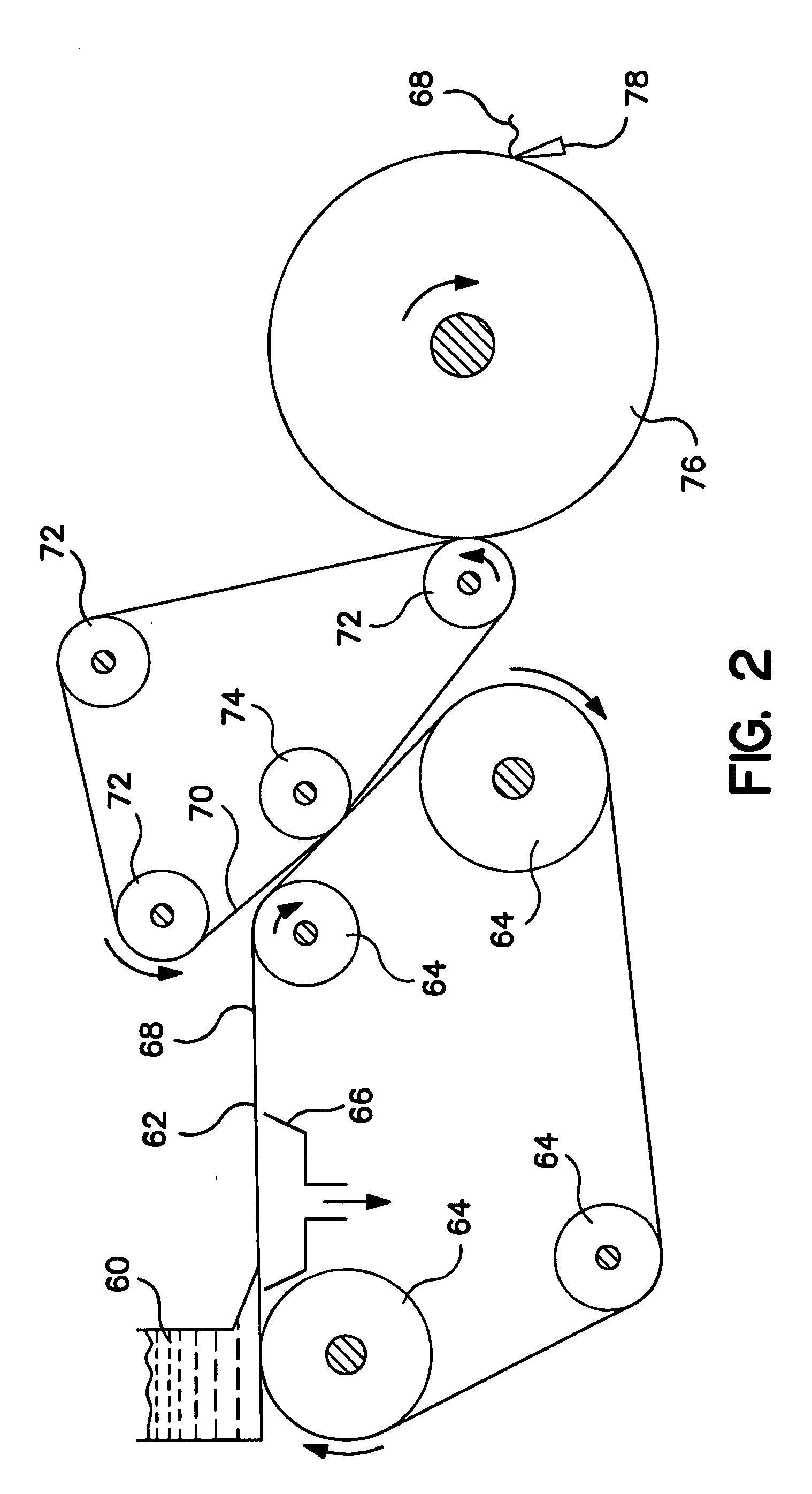Nonwovens having reduced poisson ratio
a technology of nonwovens and poissons, which is applied in the field of nonwovens having reduced poisson ratio, can solve the problems of adverse effects on the strength of the tissue web, adverse effects on the other characteristics of the product, and difficulty in producing high-quality tissue products, so as to reduce the poisson ratio of the tissue web and the effect of negative poisson ratio
- Summary
- Abstract
- Description
- Claims
- Application Information
AI Technical Summary
Benefits of technology
Problems solved by technology
Method used
Image
Examples
example 1
[0117] Computer modeling of different print-creped tissue products was completed to demonstrate the ability of the present invention to significantly lower Poisson ratios.
[0118] Specifically, two bonding patterns made in accordance with the present invention were compared with a control. The first bonding pattern was similar to the one shown in FIG. 5 wherein the expanded regions had a triangular shape. The second bonding pattern was similar to the bonding pattern illustrated in FIG. 7, wherein the expanded regions were shaped like hexagons. The control was a bonding pattern as shown in FIG. 7 except all sides of the hexagons were enclosed. The pattern thus appeared to be honeycomb-like. Each hexagon had a length of 3 mm and a width of 3 mm.
[0119] During computer simulations, the computer was programmed to predict transverse (cross direction) strain versus longitudinal (machine direction) strain for a print-creped, print-creped web containing the patterns on each side of the web. ...
example 2
[0138] In order to demonstrate that the bonding patterns of the present invention are capable of significantly reducing the Poisson ratio of a tissue web, an uncreped through-air dried (UCTAD) base web was treated with a bonding material according to the teachings of the present invention and the web was then subjected to various standardized tests. During this example, the tissue webs were treated with a bonding material in accordance with the present invention but were not creped from a creping surface. Further, none of the products were optimized in the example. This example was completed merely to show that applying a bonding material to a tissue web according to an auxetic pattern will significantly lower Poisson ratios.
[0139] The UCTAD based web was formed in a process similar to the method shown in FIG. 1. In this particular example, the base web was made from a stratified fiber furnish containing a center layer of fibers positioned between two outer layers of fibers. Both o...
PUM
| Property | Measurement | Unit |
|---|---|---|
| Length | aaaaa | aaaaa |
| Fraction | aaaaa | aaaaa |
| Fraction | aaaaa | aaaaa |
Abstract
Description
Claims
Application Information
 Login to View More
Login to View More - R&D
- Intellectual Property
- Life Sciences
- Materials
- Tech Scout
- Unparalleled Data Quality
- Higher Quality Content
- 60% Fewer Hallucinations
Browse by: Latest US Patents, China's latest patents, Technical Efficacy Thesaurus, Application Domain, Technology Topic, Popular Technical Reports.
© 2025 PatSnap. All rights reserved.Legal|Privacy policy|Modern Slavery Act Transparency Statement|Sitemap|About US| Contact US: help@patsnap.com



